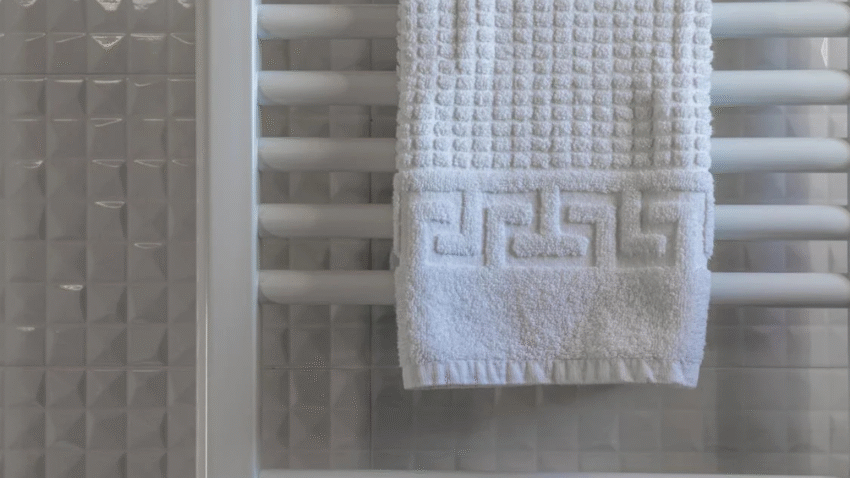Introduction
Noticing water damage, mold near the edges, or a musty smell coming from your bathroom floor? It might be time to learn how to seal a bathroom floor properly. Sealing your floor creates a protective barrier that keeps water out, prevents mold and mildew, and extends the life of your flooring. This guide will walk you through everything you need to know—from prep to finish—for a watertight bathroom.
Why Sealing a Bathroom Floor Matters in the Bathroom
Bathrooms are naturally high-moisture environments. Every splash from the sink, drip from the shower, or puddle near the tub puts your floor at risk. Without a proper seal, water can seep into tile joints, gaps, or corners—leading to:
- Mold and mildew growth
- Grout discoloration or damage
- Warped floorboards (for vinyl or laminate)
- Cracked tiles or loose edges
- Structural damage to the subfloor
Sealing your bathroom floor not only prevents water damage but also makes regular cleaning easier by repelling stains and grime.
Step-by-Step Guide to Sealing a Bathroom Floor Properly
1. Choose the Right Sealant
Different floor types require different sealants:
- Ceramic or porcelain tile: Use a penetrating grout sealer
- Natural stone (like marble or slate): Use a stone and grout sealer
- Vinyl or laminate flooring: Use a water-resistant floor sealer designed for synthetic surfaces
- Concrete floors: Use a waterproof concrete sealer
Tip: Make sure your chosen product is labeled for bathroom or wet-area use.
2. Gather Your Supplies
Here’s what you’ll need for most sealing projects:
- Sealant (based on floor type)
- Applicator pad, sponge, or paintbrush
- Grout brush or old toothbrush
- Mild floor cleaner
- Bucket and mop
- Painter’s tape (optional)
- Clean microfiber towels or cloths
- Ventilation fan or open windows
3. Clean the Floor Thoroughly
Sealing over a dirty floor locks in grime and prevents the sealant from bonding properly.
- Sweep or vacuum to remove debris
- Mop the entire floor using a mild bathroom-safe floor cleaner
- Scrub grout lines with a small brush to remove any mold or soap scum
- Allow the floor to dry completely—this may take 24 hours depending on humidity
Pro Tip: Use a fan or dehumidifier to speed up the drying process, especially around grout lines.
4. Test a Small Area First
Before applying sealant to the entire floor, test it on a small hidden section to make sure it doesn’t alter the color or finish.
- Apply a small amount of sealant to a discreet corner
- Let it sit for the recommended time
- Wipe and inspect for discoloration or residue
If everything looks good, you’re ready to proceed.
5. Apply the Sealant Evenly
Follow the directions on your sealant bottle carefully. Most will advise applying in sections:
- Pour a small amount onto the floor or dip your applicator in the sealant
- Work in 2’ x 2’ sections
- Apply using smooth, even strokes
- Focus extra attention on grout lines and corners where moisture collects
Tip: Use painter’s tape to mask off walls, baseboards, or fixtures if you’re concerned about accidental drips.
6. Let the Sealant Soak In
Most sealants require a soak-in time of 5 to 15 minutes.
- Don’t walk on the treated area
- Avoid letting it puddle—wipe away excess with a clean cloth
- For grout sealers, gently blot the tile surface to prevent a cloudy film
7. Apply a Second Coat (Optional)
If your sealant recommends multiple coats, wait for the first layer to dry as instructed (typically 1–2 hours), then apply the second coat the same way. Two coats often provide better durability in high-moisture zones like the bathroom.
8. Allow the Floor to Cure
After applying the final coat:
- Avoid foot traffic for at least 4–6 hours
- Avoid moisture (no showers, mopping, or spills) for at least 24–48 hours
- Use fans or keep the bathroom well-ventilated to help the curing process
Common Mistakes to Avoid
1. Sealing over dirty floors
This traps dirt, stains, and bacteria under the sealant.
Solution: Always deep clean and dry your floor thoroughly first.
2. Using the wrong type of sealant
Different flooring materials require specific products.
Solution: Read the label and choose one designed for your floor type.
3. Skipping the grout lines
Grout is porous and prone to water damage if left unsealed.
Solution: Apply sealant carefully into all grout lines.
4. Not letting it cure properly
Walking or spilling water too soon can ruin the seal.
Solution: Follow curing time instructions carefully.
5. Applying too much at once
Thick layers lead to uneven coverage or a sticky finish.
Solution: Apply in thin, even layers with proper drying in between.
Extra Tips & Bathroom Hacks
🧽 Refresh grout color before sealing:
If your grout is stained or uneven, consider using a grout colorant or cleaner before sealing to restore a uniform appearance.
🧴 Reseal regularly for best results:
Grout and tile should be resealed every 12–18 months. Check your sealant’s label for durability.
📌 Keep a squeegee handy:
Wipe down excess water from your floor after showers to extend the life of your seal.
👉 Related article:
Struggling with tile issues? Check out our guide on how to repair loose bathroom tiles.
Conclusion
Sealing your bathroom floor is one of the best ways to protect your space from moisture, mold, and long-term damage. With the right prep, products, and technique, you can create a durable, water-resistant barrier that keeps your floor looking great and performing well.
Whether you’re sealing tile, vinyl, or stone, take your time with each step and follow the product directions. Your future self—and your floor—will thank you.
📌 Bookmark this guide so you can keep your bathroom fresh, clean, and problem-free all year round.
